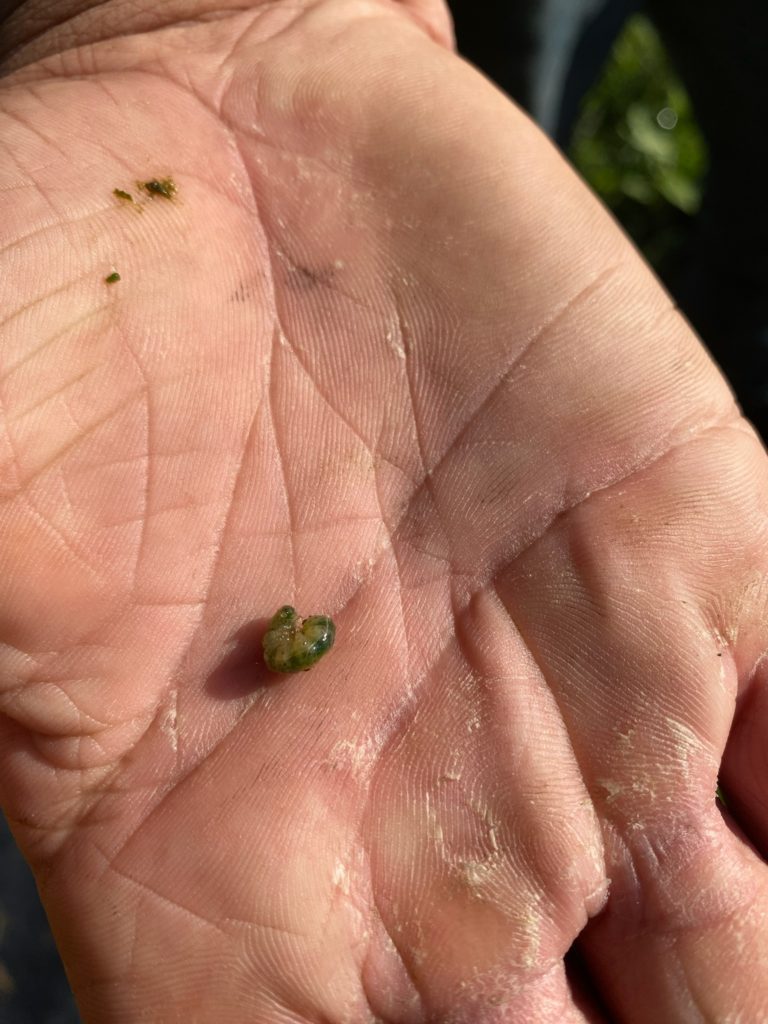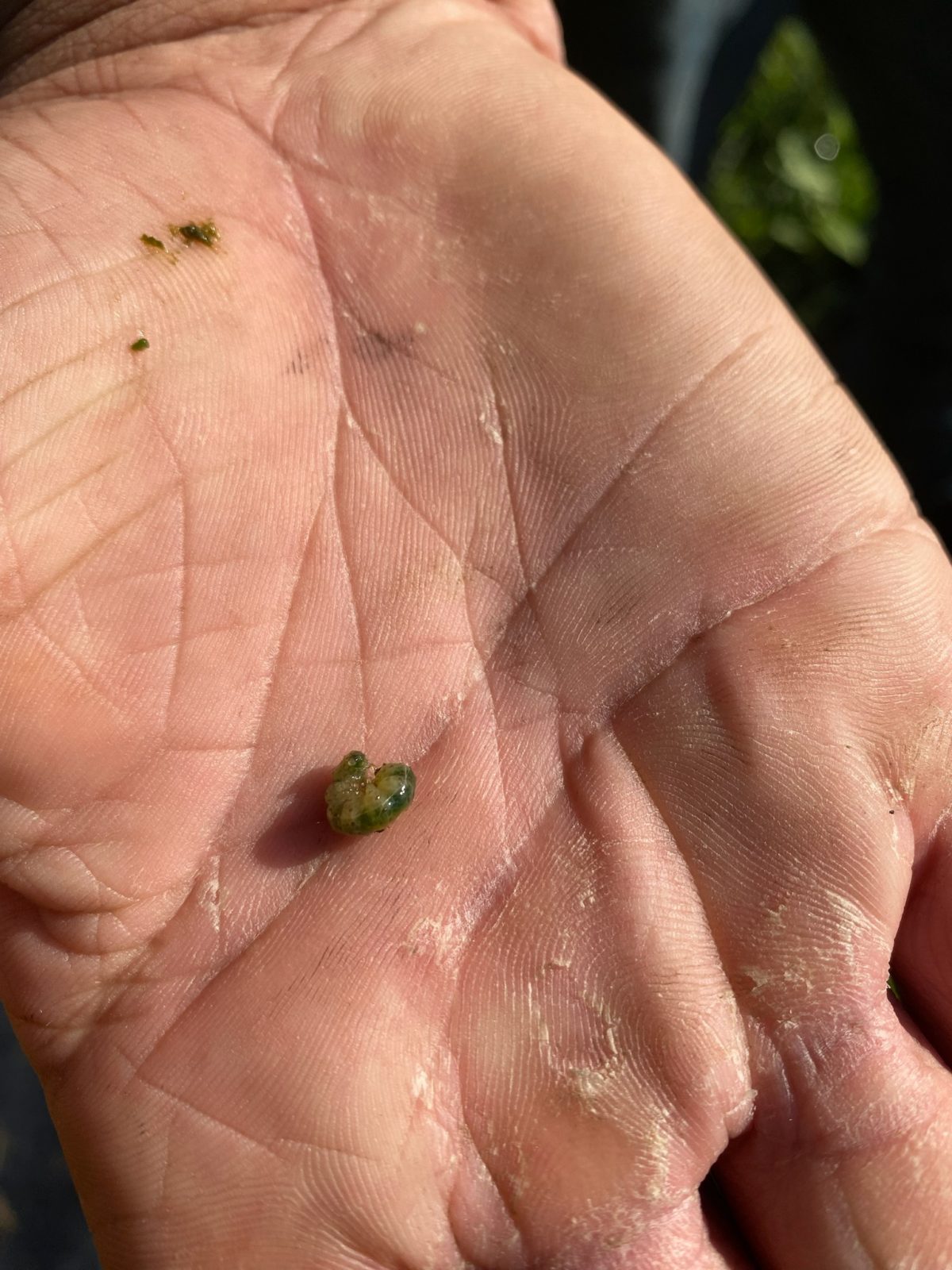Weekly Field Update
Clemson Extension agents provide updates in The South Carolina Grower this week about the status of various crops being produced throughout the state.

Coastal Region
Zack Snipes
- I had a few questions this week about insect damage on a variety of crops. I want to emphasize how important identifying the pest is. In one particular case, it looked like caterpillar damage and when the pest was found, it looked like a caterpillar. But upon closer inspection, the pest had six legs or three pairs of legs. This is an indicator that this is a true bug and not a caterpillar (caterpillars or lepidopteran have more than three pairs of legs). We determined that this was a vegetable weevil larvae, and that Bt would not work on the pest as Bt is specific to ONLY caterpillars (Lepidopteran pests). I am also getting a few questions on organic fertility. I recently wrote a fact sheet that talks about organic fertility. https://hgic.clemson.edu/factsheet/understanding-organic-fertility/
Rob Last
- Following up to 8 inches of rainfall and continued rainfall this week, crops are suffering.
- Phytophthora is very active in many fall watermelon crops.
- Gummy stem blight is also evident in many crops.
- Soil conditions remain very wet.

Midlands
Philip Carnley
- Fall tomatoes are doing well with the cooler day temperatures. I’m still seeing a fair amount of tomato fruit worm and an increase of bacterial speck.
- Fall greens in my area were delayed for many growers but are coming on strong now. With fall greens it’s important to note that they are heavy feeders and require more nitrogen than you might think.
- Many growers have begun or are finishing strawberry pre-plant fertilizer applications and are forming beds, prepping for fumigation.
- Sweet potato has been a little odd this year. Some fields matured early, with others showing various degrees of maturity. Flavor in most cases has been there, and wire worm complex was not as prominent.
- Fall cowpea and butterbean planting seem to be doing great. Very low or limited curculio is present. But anthracnose is becoming more frequent.
- Snap beans are doing wonderfully with the cooler temperatures, if you can keep the deer from browsing them to the ground.
- Fall squash has produced exceptionally well, with the biggest issue being mosaic virus.
Rob Last
- Crops are developing well, with fall crops looking good. Pest and disease pressure remains relatively low; however, scouting will remain crucial to stay on top of potential issues. Rainfall of 1.5 inches has been pretty typical this week in the area, reducing some irrigation pressure.
- Diamondback moth numbers remain low. However, I would expect pressure to begin to increase.
- Land preparations are well underway for strawberries.
- Soil conditions are looking excellent for firm bed formation.
Sarah Scott
- Strawberry fields are prepped for upcoming plantings.
- Brassica crops are looking pretty good. Recent heavy rainfall seems to have driven an uptick in blossom end rot, but hopefully we will dry out and get back on track this week. Deer are really getting into crops lately, and physical barriers such as electric fencing are really the only thing keeping them out of fields. A deterrent is helpful but doesn’t have great results.
- Growers are still wrapping up trunk sprays for borers on peach trees and preparing for their fall herbicide applications.
Upstate
Andy Rollins
- We are picking heavily on muscadine/grape farms across upstate. We are picking both black and bronze varieties for the most part, although black variety harvest is slowing some. RubyCrisp is a seeded UGA (University of Georgia) variety that has a high sugar, fairly thin skin for a muscadine, and not quite as strong of a “musky” flavor. This may be one for those who aren’t as fond of typical muscadines, as it has its own unique flavor. A master’s student at Clemson working with Libby Cieniewicz is working on Xylella on small fruit. The grad student will be visiting statewide farms, gathering plant tissue for evaluation. If you see anything suspicious, contact your local Extension agent.
- Strawberry fumigation is ending now, and growers are planning for plants arriving soon. I have checked fumigated beds to ensure the gas has fully dissipated using a Mini Rae device that looks for any remaining gas in the soil. What I have learned is that many of our beds are very dry and all the gas is gone, but you need to wait the full 21 days from fumigation before planting. It is still advisable to punch holes the day before just in case. Please get your irrigation hooked up and begin wetting beds early before planting. You may need to run many short cycles to get shoulders wet. If over-seeding row middles, please follow the recommended seeding rates for your ryegrass cultivar. Some are using turf type perennial rye grasses to get a shorter, more dense crop. Make sure seeds are off beds before punching holes. Lastly, we had some major disease problems across the state last year. Please notify your agent if anything looks weak or diseased early. Looking forward to a great strawberry year, and it’s not far away at all.










